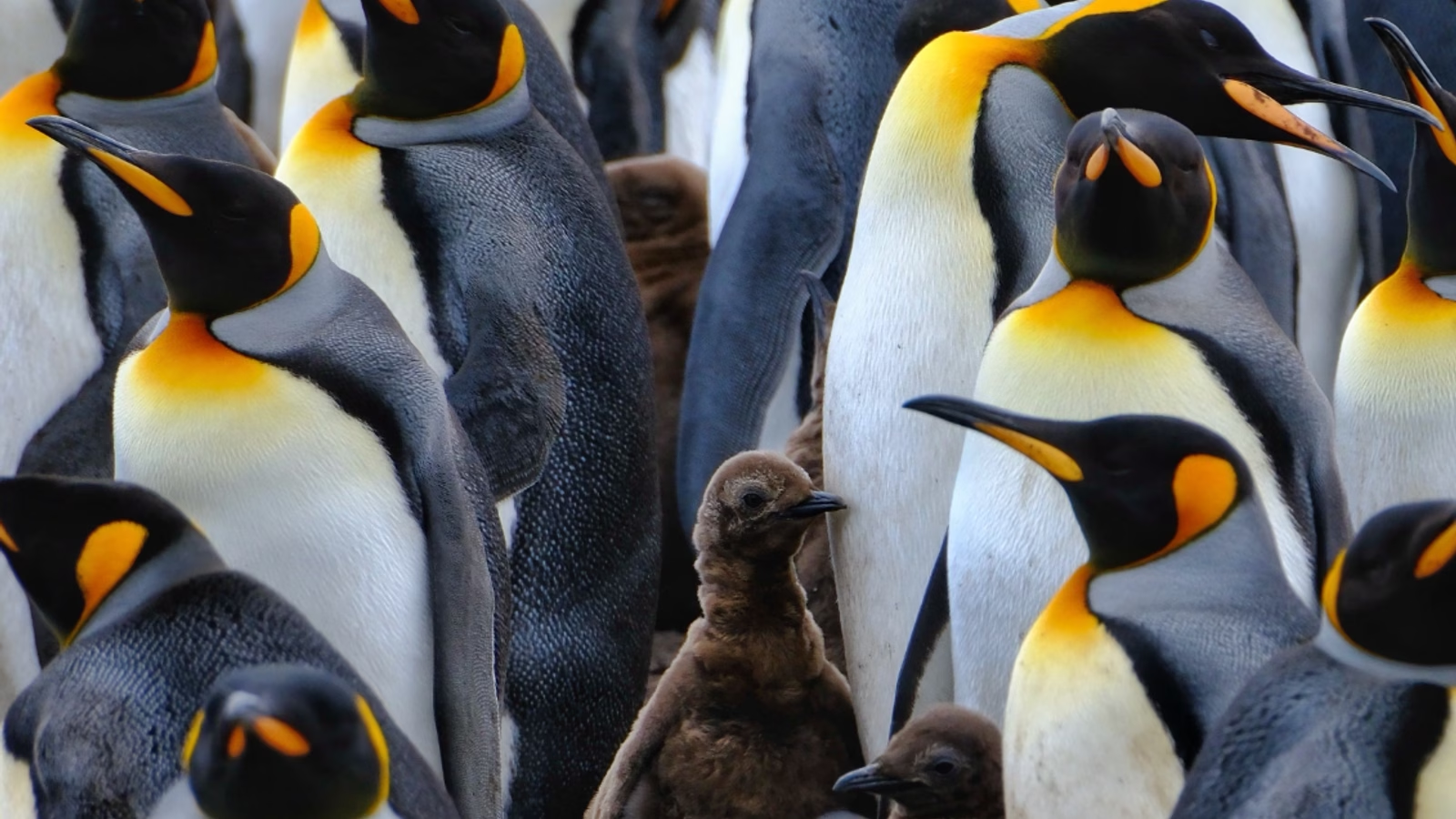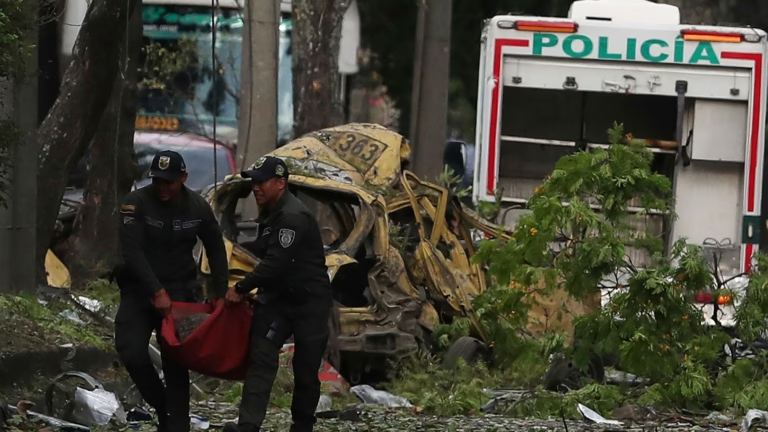Before you see them, you can hear them, and smell them.
During this time of year, in the South Atlantic summer, penguins on the Falkland Islands come together in rookeries on isolated beaches to raise their fluffy chicks.
And we are surrounded by them.
The beach at Volunteer Point, at the northeast tip of the Falklands, is home to the largest colony of king penguins.
Up to one meter tall, they can be seen standing and squabbling in a defensive huddle around their offspring.
But there are others too, burrowing magellanic penguins and red-billed, yellow-footed gentoo species.
On the 740 islands making up the Falklands there are five different species and nearly a million penguins in total.
To prevent disturbance, and the spread of bird flu, visitors are asked to stay six meters from the birds.
But the rule doesn’t apply in reverse.
Turn your back for a moment or two and a curious or territorial penguin will waddle up, giving you a side-eye like a three-foot yob in a colorfully dressed wetsuit.
The penguins are some of the most visible and accessible marine life on these islands.
Sealions, fur seals, and even a few of the world’s largest, the elephant seal, are present.
Seabirds like albatross and petrels, and recently large numbers of whales, are returning to the islands, a phenomenon rarely seen since their slaughter in the 19th and 20th centuries.
This abundance of life is in stark contrast to the windswept peat bog and rough grassland interior of the Falklands.
It’s a revelation to many visitors who arrive thinking the islands are remarkable only for their remoteness and the brutal conflict of over four decades ago.
But viewing the best of the island’s wildlife isn’t an easy task. Getting to Volunteer Point requires a three-hour drive from the capital Port Stanley, including two hours off-road.
Learn more from Sky News:
The town bracing for UK’s biggest council tax rise
Flying over the world’s largest iceberg
Despite having a well-equipped 4X4 vehicle and an experienced driver, we once found ourselves unable to navigate some of the boggy terrain, which swallowed our vehicle’s wheels up to the axles.
Like everywhere else, the wildlife of the Falklands is vulnerable to climate change. But here, it’s more vulnerable than most.
The Falklands, being some of the first ice-free land between Antarctica and the rest of the world, have many species that are at the northerly limit of their range, which is expected to move further south as the planet warms.
Rockhopper penguin numbers have dwindled on the islands, likely due to their main food source, shrimp-like krill, moving further south to cooler waters.
The Falklands are experiencing less rainfall, leading to peat soil drying out and strong South Atlantic winds eroding soil.
This, combined with centuries of overgrazing by sheep, is causing significant soil loss, according to Esther Bertram, CEO of Falklands Conservation: “On some of the land that we’re working on, we’re seeing about nine football pitches worth of soil blowing away each year.”
The drying climate also contributes to wildfires, which recently burned crucial wildlife habitats, including nesting albatrosses, as reported by Ms. Bertram.
Conservation groups and researchers on the islands are working to study the changing ecosystem and restore critical habitats, such as replanting native tussock grass to help retain the soil crucial for burrowing penguins and petrels. But even this work is under threat.
Conservation and research in the Falklands are nearly entirely reliant on grant funding from the UK government through a program for British Overseas Territories called Darwin Plus.
However, the future of this program is uncertain as budgets for overseas development and conservation are under threat.
The Defra department, which administers the scheme, could not confirm whether Darwin Plus will continue beyond 2025.
With thousands of miles of ocean separating the Falklands and the financial struggles of Westminster, the value of their unique wildlife is often overlooked.












